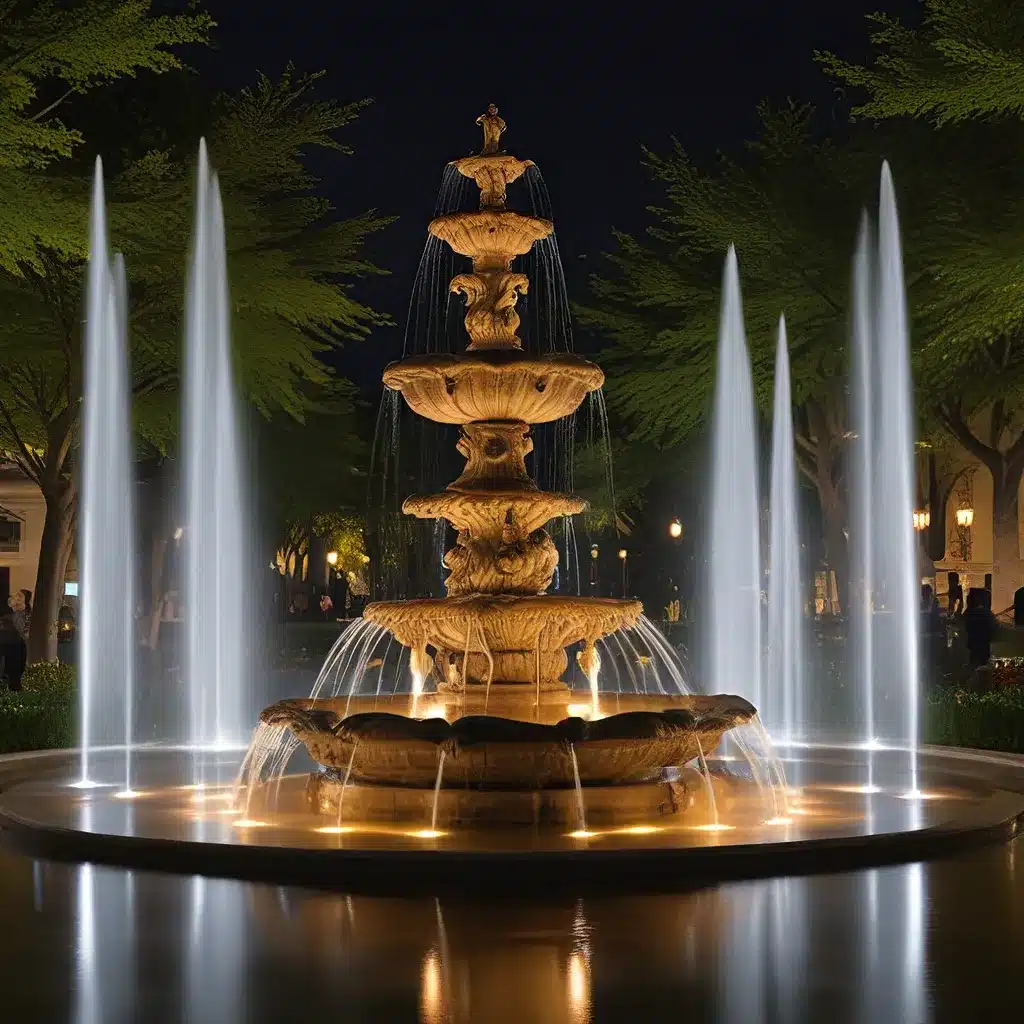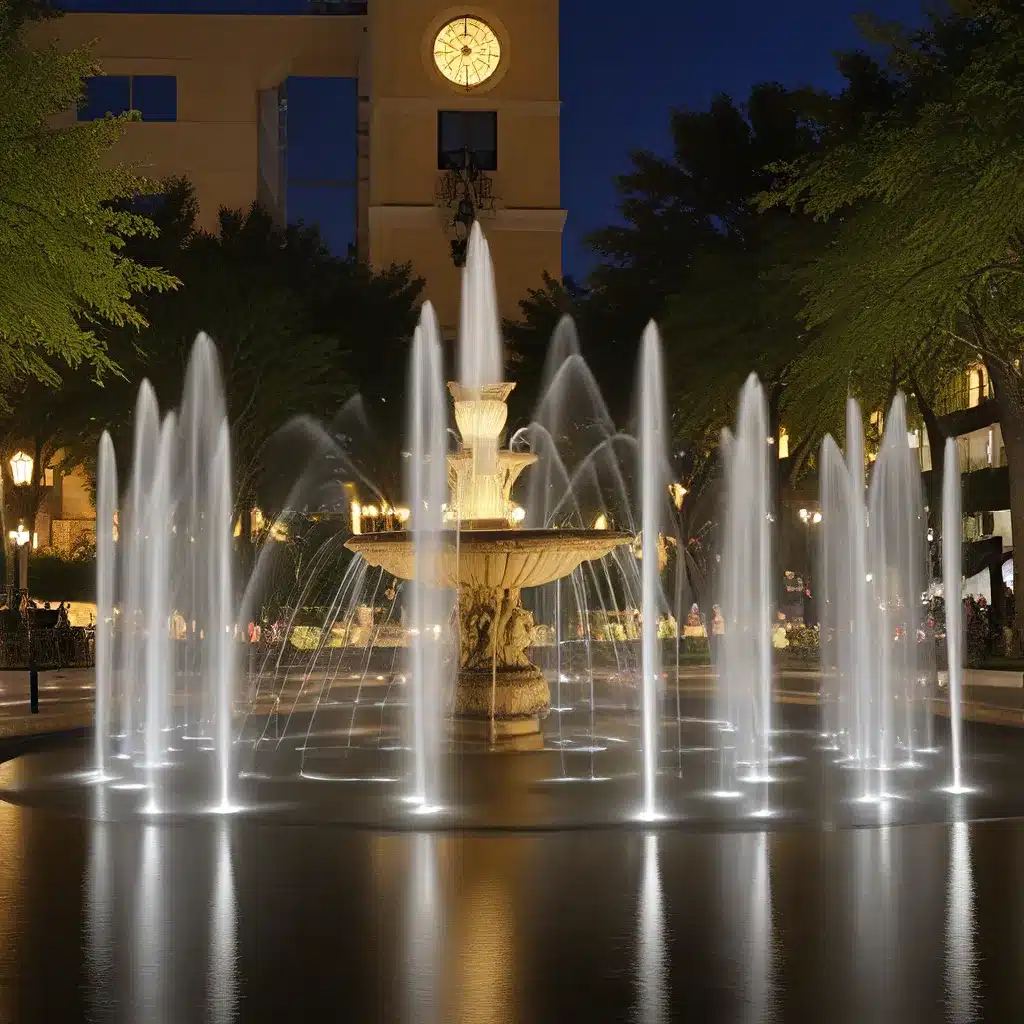
Fountain Design Essentials – Welcome to Fountain Lights
Fountain Design Essentials – Welcome to Fountain Lights

Ah, the captivating world of fountain hydraulics – where the art of water manipulation meets the science of fluid dynamics. As someone deeply fascinated by this intricate field, I can’t wait to take you on a journey through the incredible innovations that are transforming the landscape of fountain illumination.
Fountain hydraulics is an enchanting amalgamation of engineering principles and aesthetic prowess. At its core, it’s all about understanding the behavior of fluids in motion – a branch of science known as hydrodynamics. When it comes to fountains, this encompasses how water is moved, controlled, and displayed to create those mesmerizing visual effects.
The fundamental forces at play are gravity and pressure. Gravity, that ever-present force, pulls the water down, initiating the flow. Meanwhile, pumps apply the necessary pressure to propel the water upwards or through various pathways. Striking the perfect balance between these two forces is crucial in designing a fountain that not only functions flawlessly but also captivates the viewer.
Now, the choice of pump is crucial – it’s the very heart of a fountain’s hydraulic system. We have submersible pumps that are perfect for smaller fountains, providing a quiet and easy-to-install solution. On the other hand, external pumps are more powerful and better suited for large-scale, intricate fountain displays.
But the journey doesn’t end there. The pipes and channels that transport water from the source to the fountain’s elements are equally important. The material and design of these components directly impact the efficiency of water flow and the longevity of the system. From the humble PVC and plastic for simpler designs to the robust copper and stainless steel for larger, more elaborate fountains, the choice of materials is crucial.
Now, let’s talk about the real stars of the show – the nozzles and jets. These are the final elements where the water exits the fountain system, and they play a vital role in shaping the water display. Different nozzle types can create everything from a gentle spray to a powerful jet, allowing designers to craft a wide range of visual experiences.
But it’s not just about the nozzles – the dynamics of water flow are equally important. Laminar flow, characterized by smooth and orderly movement, creates those captivating glass-like streams. In contrast, turbulent flow with its chaotic and irregular movement is used to generate those lively, splashy effects. Mastering the art of manipulating these flow types is what separates the ordinary from the extraordinary in the world of fountain design.
And let’s not forget the all-important factors of velocity and pressure. High-pressure systems can propel water to dizzying heights, while lower pressure creates those gentler, more cascading flows. Adjusting these elements through pump power and pipe sizing allows designers to achieve precise control over the fountain’s dynamics.
One of the primary challenges in the world of fountain hydraulics is striking a balance between aesthetic goals and engineering realities. Designers must consider a myriad of factors, from water distribution and wind interference to maintenance needs, all while creating visually stunning and emotionally resonant displays.
But the industry is constantly evolving, and sustainability has become a crucial aspect of modern fountain design. Innovations in hydraulic technology are now focused on water conservation, energy-efficient pumps, and environmentally friendly materials. Recirculating water systems have become the new standard, minimizing water waste and loss.
And the future holds even more exciting possibilities. The integration of smart technologies and automation is poised to revolutionize the world of fountain hydraulics. Imagine fountains equipped with sensors and computer-controlled systems that optimize water usage and choreography, all powered by renewable energy sources.
From the historical masterpieces like the Trevi Fountain to the modern wonders like the Bellagio and Dubai Fountains, the evolution of fountain hydraulics reflects both technological advancements and changing aesthetic tastes. These captivating water displays are not just feats of engineering – they are testaments to human ingenuity and our ability to harness the power of one of nature’s most versatile elements: water.
As we look to the future, the continuous innovation in hydraulic systems and materials will undoubtedly lead to even more spectacular and environmentally friendly water displays. The journey of fountain hydraulics is far from over, and I can’t wait to see what the next chapter holds.
If you’re as fascinated by this subject as I am, I encourage you to explore the world of fountain illumination. Who knows, you might just discover your own inner fountain designer, ready to create the next masterpiece of fluid dynamics and aesthetic brilliance.
Share to :
Subscribe to our newsletter for the latest in fountain design, innovative lighting ideas, and exclusive tips straight to your inbox. Join the community shaping the future of water features.

Rapid delivery to your doorstep.

Excellence in every product.

Great value for your investment.

Assistance at any hour.
Fountain Lights — Illuminating creativity in every splash!
Copyright © 2023. All Right Reserved